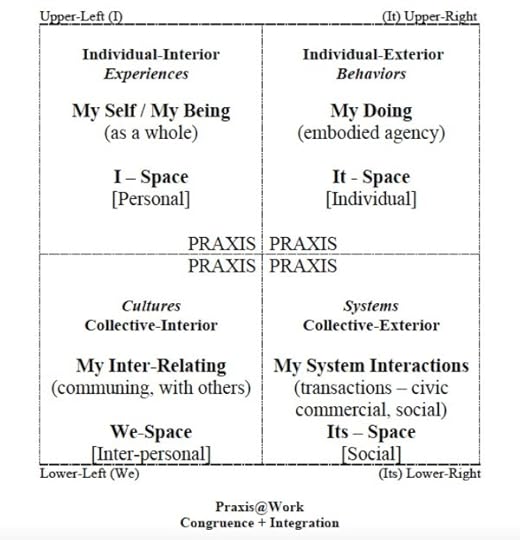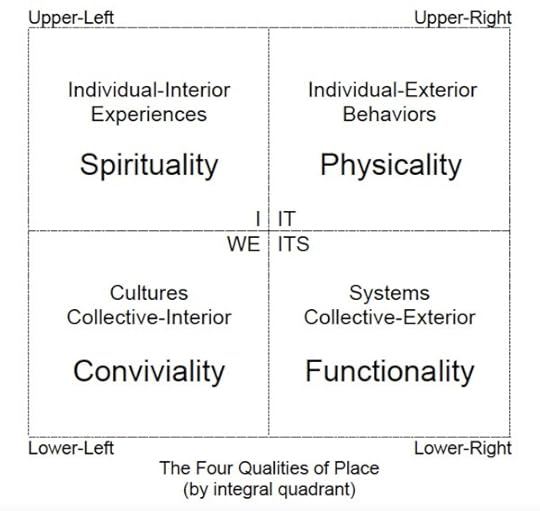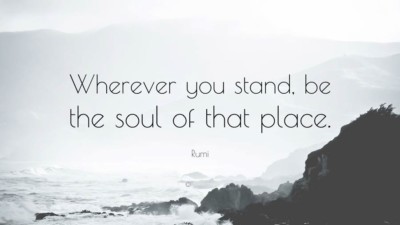Marilyn Hamilton's Blog, page 31
March 21, 2020
Sans Peur – Without Fear
My husband, Peter Dobson, was Scottish and proud of the clan motto of his army division “Sans Peur”. Without fear.
It is a motto that we could do well to follow as the pandemic covid19 flows around the world with an eerie inevitability marked with obsessive reporting by every extant media channel.
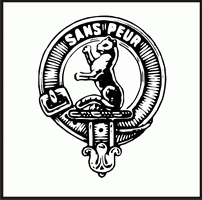
But it is difficult to turn away from the feeding frenzy of hourly reporting by country of statistics of spread, mortality and recovery rates.
We are dragged into the intimidating bludgeoning of manipulative fearmongering by a media that is more interested in generating views or click-throughs than in reporting information that can equip people with an integrated approach to responding to this biological threat that is disrupting daily lives at every level of scale.
When the unrelenting impact of negative news washes over us like repeated tsunamis of mud, how can an integral perspective enable us to ground our bio-psycho-cultural-systems perspectives of life?
For me it is déjà vu all over again. Living in Findhorn, it seems surreal that I am dipping back into my experiences of 15 and 20 years ago to dust off integrally designed strategies that can help our community respond wisely to the life conditions of covid19.
Today I am so in agreement with the “no fear” theme of Sarah McCrum. She has taken up the same theme I was writing about for the upcoming newsletter. Read her article here https://sarahmccrum.com/for-once-i-have-to-write-about-the-news/
Find Sarah’s Activation for Healing practices here:
Here are the links from Sarah for sharing:
Activation for Collective Healing
Lessons From Healing People That We Can Apply to Healing Humanity
OR
https://courses.sarahmccrum.com/courses/activation-for-collective-healing
https://courses.sarahmccrum.com/courses/lessons-from-healing
Another source of integrally informed perspectives comes from Terry Pattens State of Emergence Podcasts here https://newrepublicoftheheart.org/podcast/
March 8, 2020
Telling We-Stories to Our Future: A Poiesis of Sophrosynes?
Making a Place We Can All Call Home:
Wrestling with VUCA – Through Placemaking
As Wellbeing By Design
This is six in a series of 6 Thought Pieces by Ian Wight exploring his contribution to Urban Hub 20: Accelerating City Transformation in a VUCA World (curated by Marilyn Hamilton, published by Paul van Schaik, to be released April 2020)
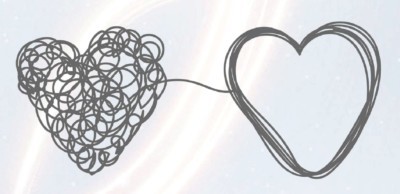
[Our Entangled Future: Stories to Empower Quantum Social Change (2019). Edited by Karen O’Brien, Ann El Khoury, Nicole Schafenacker and Jordan Rosenfeld. Adaptation CONNECTS]
___
Through an integral lens we have been exploring the realm of ethos, an inter-personal space, where some practical wisdom might be assayed about how we as a species – in all our inter-subjectivity, might be enabled to achieve greater accord as to how we might fruitfully engage with the challenges of our times. So that we might achieve some ‘we-stories’ – some further evolution stories – that are worth telling to our collective future.
The underlying ethos-making is being conceived in novel ways, that may presage very different future manifestations of what gets consciously presenced (in relation to what is generally absenced). It involves ‘telling a WE-story to the future’. It is a collective, convivial project – for agents in communion (not sole agents, nor solo efforts). As story-telling it is a moral tale. As a ‘making’ endeavour it is a ‘we-design’ project, in a ‘we-zone’, where we try to see with Marcel Proust’s multi-perspectival ‘new eyes’.
“The real voyage of discovery consists not in seeking new landscapes, but in having new eyes, to behold the universe through the eyes of another, of a hundred others, to behold the hundred universes that each of them beholds, that each of them is…” Marcel Proust [Full quote, and a treatment of its full context, here: http://clearingcustoms.net/2013/12/17/what-marcel-proust-really-said-about-seeing-with-new-eyes/]
Ethos-making is about ‘big-picture’, ‘big-caring’ perspectives – calling into being a higher/wider/deeper sense of our selves, in our persons, and collectively. What might such we-story-telling to our future look and feel like? If ‘inter-subjective according in the noosphere’ does not quite do it for you, how about the territory of yarning and yearning, around ‘yesterday’s tomorrows’?
Once upon a time, and space, in an eternal place… there are the stories that make us ‘us’. There is a power in story… synergy-generating, eternity-embracing, infinity-anticipating. What might be our integral we-story?
Consider the power of story, as a medium for the integration that is so valued, the integration of differentiations that matter. There are strong indigenous roots in the perspective of ‘telling stories to the future’.
When in Australia a few years ago, I encountered the propensity for ‘yarning’ – not only among aborigines but also among the more recent ‘settlers’. The yarning seemed to be a form of cultural bridge between the two – rooted in story. It provided a basis for exploring a collective future, and for pursuing some common yearning. It seemed to open up a grander canvass for our story-telling – the whole time-space of ‘yesterday’s tomorrows’… holding each, while privileging the unifying.
Yesterday’s Tomorrows emerged from some exploratory ethos-making – in Freemantle, Western Australia, in July 2011, exploring the terrain of meta-professionalism. It represents a generative ethos-in-the-making, addressing the yearning in yarning, and the yarning in yearning. It involved telling stories of longing, and singing songs of potential (song-lines underpin much aborigine culture). There follows some ‘ethos-pieces’ from that day – fragments of an emerging ethos, from a generative field, that we all might cultivate in our own ways.
Yesterday’s Tomorrows
Spanning Yesterday and Tomorrow
Honouring
Primalcy and Potency
Following the Song-Line Home
Resolving
Yarning
A Primal Human Urge – That is also an Imperative
The Evolution in the Creation Story: The Creation in the Evolution Story
Once Upon a Time – To Come
The Yonder in the Wonder
Yearning
Discerning what is still inside – Waiting to be given out
Beyond Being: The Becoming on the Horizon
A Privileging of the Humanity of it All
The Yearning in Yarning
An Onus for Wholeness – for Whole-making
Generating Yesterday’s Tomorrows
Ushering in New Perspectives on Old Realities
Making Connection Second Nature
The Yarning in Yearning
Storying Tomorrow’s Yesterdays
An Uncommon Respect for Basic Humanity
Overcoming the Partiality of it All
Sonance and Solace
Accord in Discord : Comfort in Distress
Generative Tension
What Ails Us : What Wells Us
Privileging Well-being and Well-becoming
In the Now
We emerged other strands to the story, still waiting to be woven in to its fabric – when the time and place is right. Strands such as: harnessing our own power, in service to others; making connections, generating synergy; manifesting evolution as an ‘ever-more-whole-making’ intention; and celebrating the miracle that is ‘we’. And in terms of our ‘meta-professionalism’ curiosity, emerging sentiments included: we are all health and wellness professionals, professing wholeness and wellbeing – with a specialty that is universal, and life-affirming; we are each power sources of a synergy that serves our emergence as ever-more-whole – in body, mind, soul and spirit – agents of, media for, the generative impulse; professing via stories – and song, and dance, and poetry – telling stories to the future, as well-beings well-becoming.
Yesterday’s Tomorrows is an ethos en route to a poiesis – an even higher level of transpersonal ‘making’ that we might aspire to, as co-creative integrities, bringing our very best to the making, in our person (our praxis), and collectively (our ethos). It begins by being at home in our Selves, a very conscious personal home-coming, for – as John O’Donohue reminded us: ‘when one is at home in oneself, one is integrated and enjoys a sense of balance and poise’. This rendering actually aligns very closely with the Greek notion of ‘sophrosyne’ which Richard Sennett has interpreted as: ‘to be balanced and centred, in face of difficulty and diversity, acting with grace and poise, balancing inner and outer life exposure’. This sophrosyne is what every authentic ‘maker’ – of a place we might all call home – must embody, and enact; in effect, in the persona of a sophrosyne.
What seems particularly significant however is that sophrosyne and poiesis were considered by those wise ancient Greeks to be ‘intimately related’, helping us to a fuller and deeper sense of the quality of the placemaking – as poiesis – being reached for here. As Sennett clarified:
‘… for the Greeks, to balance oneself one had to act as well as to look. The result of caring about what one sees is the desire to make something – poiesis (poetry – but their word was broader than one art in scope)… As a result of his or her own engagement in making or doing things carefully, sophrosyne and poiesis were intimately related’ (Sennett, 1990, p. xiii)
Making a place we might all call home implicates an exquisite making by exquisite makers. The underlying poiesis is more than poetry-making; it engages other allied arts, such as story-telling. But it also demands placemakers – the agents of placemaking – who have a poetic sensibility and disposition – enacting and embodying the modern equivalent of sophrosyne: integrated, balanced, centred, graceful, poised. At home in oneself. In place. In communion. Relishing the challenge of inter-subjective according in the noosphere. A poiesis of sophrosynes?
[Gavin Thompson: Sophrosyne 1]
This blog series is contributed by Guest Blogger, Ian Wight (Ian Wight copyright 2020).
In Pursuit of Ecological Wisdom – Inter-Subjective According in the Noosphere?
Place, Placemaking and Placemakers – Poetic Agency in Communion
Coming Home to Ourselves – Praxis-making
Co-Creative Integrities – Ethos-making
Enacting our Knowing, Doing and Being – in Service
Telling Stories to Our Future: A Poiesis of Sophrosynes?
Enacting our Knowing, Doing and Being – In Service in a VUCA World
Making a Place We Can All Call Home:
Wrestling with VUCA – Through Placemaking
As Wellbeing By Design
This is five in a series of 6 Thought Pieces by Ian Wight exploring his contribution to Urban Hub 20: Accelerating City Transformation in a VUCA World (curated by Marilyn Hamilton, published by Paul van Schaik, to be released April 2020)
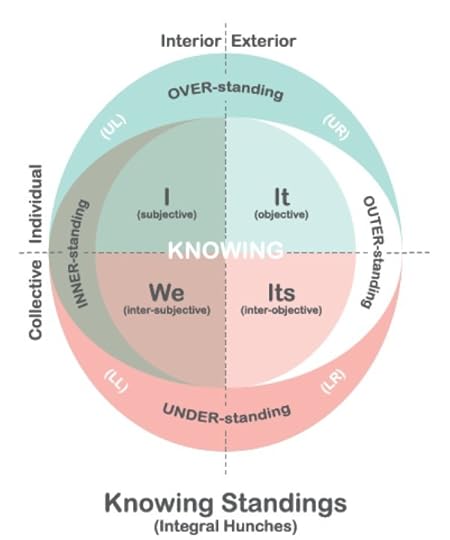
In integral terms enacting is more than acting; it honours the in-side-ing, the in-sighting, the in-tuiting – alongside the otherwise too easily privileged outer acting or performing, where our True Self can often-times be off to the side, or in shadow. An enacting disposition directs attention to the ‘in-goes’ in our ‘out-comes’ – the inner-goings-on in our part of the noosphere. We ‘enact’ as knowing/doing/being self-systems, that we are personally accountable for, that we monitor, and adjust, and – on occasion – consciously transform.
How might we ‘see’ this self-system, from an integral perspective, in a way that might help us better presence such enacting? A natural response might be to seek greater understanding – to get to the essence of what we know, and the sense we are making of this knowledge. Consider that we might have other ‘standings’ – in relation to our knowing – than simply under-standing. The diagram offers some integral hunches about equally significant over-standing, inner-standing and outer-standing that we might wish to acknowledge and cultivate, in our personal praxis-making and inter-personal ethos-making.
Perhaps we are simply channeling Hermes Trismegustus: ‘As above, so below, as within, so without, as the universe, so the soul’. Over-standing might be read as our spirit-at-work; inner-standing might be our soul-at work; outer-standing where we are most obviously in service beyond ourselves; under-standing as our ground of being.
There are probably similar insights to be derived from an integral inquiry into our doing and our being, to yield a better sense of ourselves, of our knowing/doing/being self-system. Our current doings might be mostly manifest acts of information-processing – informers-at-work, often given form in our performing – as performers in systems, but less often in our transforming. Consider that we may be being called to be present as our transformer-selves – transforming, transformatively, transcendingly. Could you ‘do’ such 4T transformation?
Our current ‘being’ may also be a function of our operative setting – where we sit, as well as stand. Mind-set may loom large here; is it fixed/static or is it expanding/growing? Or is it set to ‘flow’, optimally? And what about similar considerations of our heart-set, and our soul-set? There is much scope for some common meaning-making hereabouts, to deepen our enacting, individually and collectively. Think, for example, of our outer knowing/doing/being in terms of our inner minding, hearting and souling. And connect with not simply the subjectivity, but the inter-subjectivity in all this.
Would such development of our selves increase our ability to achieve some natural resilience https://www.linkedin.com/pulse/really-resilient-resilience-ian-wight/ – as a counter to the volatility, uncertainty, complexity and ambiguity of our VUCA world? A built-in resilience to VUCA conditions, a ‘VUCA-savvy-ness’ that keeps us functioning efficaciously, if not effortlessly? A self-caring that embraces others, and our shared world – and an associated four-fold ‘response-ability’: being reliable in volatile situations; being trustworthy in uncertain situations; being direct in complex situations; and being understandable in ambiguous situations.
There is a larger story being told in such enactings, beyond slaying the VUCA dragon. The praxis-making and ethos-making come together in some extraordinary story-telling, around an evolution story on a par with our creation story. We are the authors of, and the characters in, the story – as its enactors. This particular ‘inter-subjective according in the noosphere’ is given form as ‘telling we-stories to our future’ – primal and potent in equal measure. A higher ‘making’ is implicated – by those with a praxis and sharing an ethos, venturing into their leading edge, targeting the ‘territory beyond’. This is the realm of poiesis, undertaken by modern sophrosynes: exquisite making by exquisite makers.
This blog series is contributed by Guest Blogger, Ian Wight (Ian Wight copyright 2020).
In Pursuit of Ecological Wisdom – Inter-Subjective According in the Noosphere?
Place, Placemaking and Placemakers – Poetic Agency in Communion
Coming Home to Ourselves – Praxis-making
Co-Creative Integrities – Ethos-making
Enacting our Knowing, Doing and Being – in Service
Telling Stories to Our Future: A Poiesis of Sophrosynes?
Co-Creative Integrities – Ethos-making
Making a Place We Can All Call Home:
Wrestling with VUCA – Through Placemaking
As Wellbeing By Design
This is four in a series of 6 Thought Pieces by Ian Wight exploring his contribution to Urban Hub 20: Accelerating City Transformation in a VUCA World (curated by Marilyn Hamilton, published by Paul van Schaik, to be released April 2020)

With a visceral sense of your own praxis, you are now well prepared to venture into inter-subjective according with a vengeance. Appreciate that a shared praxis – with others having a sense of their praxis – paves the way for some ethos-making, by potential co-creative integrities. Getting subjects to agree on how we can live in accord with nature will depend on the ‘subjects’ operating in and as co-creative integrities, forged in a co-created ethos, as integration-in-action. Think of it as collective-consciousness-in-action – ‘grounded’ in the noosphere we co-constitute.
In ethos territory your praxis shifts from the personal to the inter-personal. You are still ‘you’ but just as a praxis disposition facilitates the transformation from ‘me’ to ‘I’, so an ethos orientation also engages increasing dimensions of your ‘We-ness’ – the We-ness at work in ‘You’ with others, exploring common ethos territory. The ethos-making occurs as the integration of personal embodiment, self-transformation, relationships and systems (see below). Discernment – our ability to judge what is good, true, and beautiful – comes again the fore – but now in a collective, co-creative, context; marshalling the inner knowledge in collective intelligence of how to act on that which we perceive.
We operate in ‘fields of engagement’, disposed to acknowledge that ‘institutions are us’. We present as whole persons – engagers, engaging, engagingly. We seek to achieve right relations, just relationships. We support one another on a self-transformation journey from I to We. Think of ethos-making as the ‘inter-work’ between our ‘outer’ work and ‘inner’ work.
An ethos is much more than a bundling of ethics. The latter may be conceived as more ‘out there’, at an institutional distance from us, ostensibly objective, ultimately a set of third-person ‘its’. By contrast, ethos may be conceived as more ‘in here’, constitutive of our core, subjective – perhaps more accurately inter-subjective – a manifestation of the combination ‘I + We’; real, lived, always being made and re-made, as conditions evolve. Defined as ‘the distinctive character, fundamental values and spirit of engaged members’, ethos draws on the Greek term for ‘accustomed place’ or ‘starting point’. In an important sense, ethos seems to represent the origin of ethics; it is prior to ethics.
Ethos entails a higher level of common meaning-making, quite distinct from logos and pathos. One particularly appealing rendering situates ethos as ‘a habitual (ethical) gathering place’ which inspires the sense of ethos as a unique mesh of personal, professional and planetary ethics, constantly enacted, always ‘on show’. Here, ethos is positioned as one, potentially central, integral ‘making’ (situated between praxis and poiesis) – a making that is also an integration, the embodiment of those aspiring to be an integral (transcending while including what we currently might refer to as a professional).
For professionals en route to being integrals, and for individuals en route to identifying primarily as persons, ethos-making can open you up, in good company. Here are two scene-setting fragments of an ethos (Agency in Communion) developed by a mix of built environment professionals – city-makers all – reflecting on their common inter-professionalism:
We are professionals, in development,
from solo to synchro, generating synergy,
inter-professing together, integrated and integrating,
in service, to our wider worlds, beyond us,
transcending while including, all we hold dear
We are personals, in relationship,
whole beings, making meaning,
discerning – truth and goodness and beauty,
agents of wholeness,
enacting our truth, exuding goodness, privileging beauty
in a loving embrace
Ethos-making aligns perfectly with efforts to achieve an inter-subjective accord on how we might better live together, with nature, in our cities, in pursuit of well-being, by co-design. It features extraordinary inter-relating, the quality of which is very much helped by some grounding in praxis work. In turn, it takes our knowing/doing/being beyond the concrete into more subtle realms, that transforms what would otherwise be simply group-work or team-work. It achieves a ‘compound interest’, through co-creative integrities, in extraordinary service, for city transformation in a VUCA world.
This blog series is contributed by Guest Blogger, Ian Wight (Ian Wight copyright 2020).
In Pursuit of Ecological Wisdom – Inter-Subjective According in the Noosphere?
Place, Placemaking and Placemakers – Poetic Agency in Communion
Coming Home to Ourselves – Praxis-making
Co-Creative Integrities – Ethos-making
Enacting our Knowing, Doing and Being – in Service
Telling Stories to Our Future: A Poiesis of Sophrosynes?
March 7, 2020
Coming Home to Ourselves – Praxis-making
Making a Place We Can All Call Home:
Wrestling with VUCA – Through Placemaking
As Wellbeing By Design
This is three in a series of 6 Thought Pieces by Ian Wight exploring his contribution to Urban Hub 20: Accelerating City Transformation in a VUCA World (curated by Marilyn Hamilton, published by Paul van Schaik, to be released April 2020)

Our effectiveness as placemakers – in integral terms – will depend on our integrated-ness, on our insides, as much as our integration-ability – on the outside, achieving the integration of physicality, functionality, conviviality and spirituality. Our integrity is implicated – how we hold ourselves together, how whole we can be, how much at home we are in ourselves. This is personal place-making, consciously integrating our knowing, doing and being, aiming for the congruence that makes us more than an individual, but a person of real substance. In this world of rampant individualism we may need to work at this deliberate privileging of the personal.
Indeed, it may be suggested that at this juncture – in our collective minding, hearting and souling – we need to very much favour a personal disposition. This accords with (what Cynthia Bourgeault has noted as) Pierre Teilhard de Chardin’s ‘unshakeable conviction that evolutionary progress will unfold its ultimate triumph in the realm of the personal’ … (encouraging) us to see our planetary home as a coherent and increasingly compassionate whole, steadily plying its way along an irreversible evolutionary trajectory’. For Bourgeault ‘there is plenty to suggest that we are entering a critical new phase in which some old-order survival strategies are giving way to a new and more intentional sense of mutual interdependence… To continue this turning it’s crucial that we humans make the evolutionary shift from ‘individuals’ to ‘persons’’. She continues:
‘We typically use these terms interchangeably, but for Teilhard they denote distinctly different, progressive evolutionary stages. An individual lives as an autonomous unit, subject to the old-order laws of ‘survival of the fittest’ and planetary indifference. A person has come to understanding themselves as belonging to a greater relational field. They now sense their identity from a sense of wholeness in an entirely different order of coherence: a whole greater than the sum of its parts. In this greater whole both unity and differentiation are preserved; meanwhile the whole begins to be infused by a supremely personal tincture or essence. The universe is no longer random, but a system of relationships to which we all belong and are participating in!’
The invitation is to see ourselves as persons, with a praxis – as our home-base, our home-place. My praxis becomes an integration of my various ‘workings’ in my world: my behaving; my enacting; my relating; and my operative system. If I were a student this would involve an integration of not only my theory studies (knowing) and practice experiences (doing) but also my core values and beliefs (being). I am my praxis@work in a meshwork of knowing, doing, being and becoming – inclusively, comprehensively.
Praxis is a place of congruence as well as integration. It is where my various ‘spaces’ – my I-space, my We-space, my It-space, my Its-space – are transformed into the place that emanates from my Self, as I show up in the world – where I manifest as a whole person, whole in body, mind, soul and spirit. Consider praxis as the place where you come home to yourself, the groundwork for all your future placemaking with others. A person, as a whole, rooted in family, community – and the land… in all one’s indigeneity.
A Praxis in Essence
Each of us is an artist of our days;
the greater our integrity and awareness,
the more original and creative
our time will become
~ John O’Donohue
Who am I? An artist of my days
What is my work? Embodying integrity and awareness
Why? In service of our becoming – original and creative – as ever-more-whole-making
This blog series is contributed by Guest Blogger, Ian Wight.
In Pursuit of Ecological Wisdom – Inter-Subjective According in the Noosphere?
Place, Placemaking and Placemakers – Poetic Agency in Communion
Coming Home to Ourselves – Praxis-making
Co-Creative Integrities – Ethos-making
Enacting our Knowing, Doing and Being – in Service
Telling Stories to Our Future: A Poiesis of Sophrosynes?
Place, Placemaking and Placemakers: Poetic Agency in Communion
Making a Place We Can All Call Home:
Wrestling with VUCA – Through Placemaking
As Wellbeing By Design
This is two in a series of 6 Thought Pieces by Ian Wight exploring his contribution to Urban Hub 20: Accelerating City Transformation in a VUCA World (curated by Marilyn Hamilton, published by Paul van Schaik, to be released April 2020)
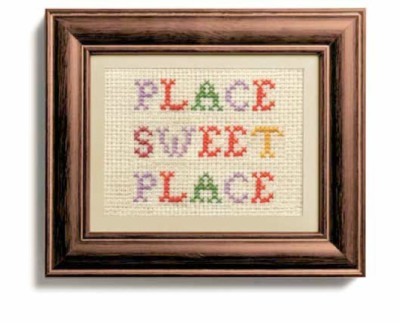
But how to feel at home in this strange new sphere – and with this possibly unfamiliar ‘inter-subjective according’? Activate your place sensibility, your place-sensing (Rebecca Solnit maintains that sense of place is our sixth sense, an internal compass and map).
Place is something we make, individually or collectively. The setting might be our room, our home, our garden, our community, our country, our world. When the making is collective, as is the case with the most meaningful and meaning-filled placemaking, it represents essentially a form of inter-subjective according in the noosphere, in our collective consciousness. So, take your cue from place, in particular its making, and most especially as yourselves as agents – as the quintessential placemakers.
You can ground your action on the climate change challenge, and your wrestling with VUCA, in your very own place – and in your natural concern for that place to manifest wellbeing, in part by your very own design. In our increasingly urban world, with its global interconnections, the scale of place that most matters, where we can make the most difference together, is probably the city scale. Consider your city worthy of your love, a making like no other, that could be life-saving as well as life-affirming.
We are called to the challenge of making a place we can all call home – beginning in our city, with our fellow citizens – as convivants. Sustainability may have been our macro-mission for the past few decades, but now, more than ever, we have to cultivate conviviality on a par with sustainability. This gets to the heart of ‘living together’, living well together, in well-loved places, with fellow place-lovers – the convivants.
Drawing on an integral perspective place may be conceived as the integration of physicality, functionality, conviviality and spirituality. In the city context it is the convivants – the placemakers – who are the integrators. Cast yourself in this role, with this integral perspective. Place is where we – together – coordinate, collaborate, constellate and meshwork our capacities for the wellbeing of the city – and as a result for the wellbeing of our planet, Gaia. Our city is where we ‘zoom in’ from, and ‘zoom out’ from, our holonics@work.
Placemaking is, essentially, common-meaning-making – our inter-subjective according play-place. Placemaking is a human art and practice from time immemorial; it has been critical for our evolution as a species. Today it involves some conscious design of spaces for dialogue, for deliberation, on shared meanings (or agreements about disagreements), that can frame collective action in the public domain – that takes on our challenges. Place is where we discharge our agency in communion, in a form of poetry-making (there is a common ‘root’ to place, and poetry, and poetics).
So – with your fellow placemakers, conviviants all, tap into your poetic sensibility; consciously put yourself, your self, in the place – you are inside it, and it is inside you. As you ‘place your self’ take in the experience of your implacement. You are implicated in the making of the place – as a place-maker (not a place-taker), and as a conducer (not a consumer) of the place. Feel into the challenge of ‘making a place we can all call home’.
This blog series is contributed by Guest Blogger, Ian Wight.
In Pursuit of Ecological Wisdom – Inter-Subjective According in the Noosphere?
Place, Placemaking and Placemakers – Poetic Agency in Communion
Coming Home to Ourselves – Praxis-making
Co-Creative Integrities – Ethos-making
Enacting our Knowing, Doing and Being – in Service
Telling Stories to Our Future: A Poiesis of Sophrosynes?
In Pursuit of Ecological Wisdom: Inter-Subjective According in the Noosphere?
Making a Place We Can All Call Home:
Wrestling with VUCA – Through Placemaking
As Wellbeing By Design
This is one in a series of 6 Thought Pieces by Ian Wight exploring his contribution to Urban Hub 20: Accelerating City Transformation in a VUCA World (curated by Marilyn Hamilton, published by Paul van Schaik, to be released April 2020)

… the startling fact is that ecological wisdom does not consist in how to live in
accord with nature; it consists in how to get subjects to agree on how to live in accord with nature. This wisdom is an inter-subjective accord in the noosphere… it is a path . . . based upon mutual understanding grounded in sincerity; it has its
own developmental stages, with its own logic. (Ken Wilber, A Brief History of Everything, 1996, p. 293; my emphasis)
Our climate change challenge – sourced in the atmosphere, entailing destruction of our biosphere – may only be resolved by achieving ‘an inter-subjective accord in the noosphere’. It will not be enough to live in accord with nature; the real challenge will be ‘getting subjects to agree on’ how we might live in accord with nature. And most of these ‘subjects’ are now living in cities; the challenge is mainly theirs – as citizens, civic managers, business innovators, and civil society denizens – in pursuit of the necessary ecological wisdom.
‘Getting subjects to agree’ will take work, on ourselves as well as with others; not simply our more familiar ‘outer work’ (in our jobs, career, businesses), nor even our ‘inner work’ on our self-awareness and presence, but also – and perhaps especially – on our ‘inter-work’, on our relationships with one another, on our inter-relating.
This is primarily consciousness work, in the noosphere – the sphere of thinking, and hearting and souling – first conceived by Pierre Teilhard de Chardin as a natural cognitive layer of existence ‘above the atmosphere’. The root noo is from the ancient Greek that translates as ‘spreading the thread of the mind’ connected to ‘reasoning’ – but wisdom, intelligence, intellect, insight, intuition and thought are all parts of the meaning of the word noo. This is the context for our ‘inter-subjective according’, beyond our otherwise familiar biosphere and atmosphere settings.
From an integral perspective this involves an extraordinary integration effort, demanding our best efforts in terms of both our integrated-ness (on our insides), and our integration-ability (on our outside, in our outer work in the world); an embodiment and enacting of our integrity – as ongoing default mode. In particular this involves a critical integration of significant differentiations, rooted in the integral quadrants and levels; an integration of self, culture and nature – in body, mind, soul and spirit.
Imagine a more evolved collective mind – and heart and soul – charged with ecological wisdom, bearing down on our challenge. ‘We’ are being implicated, in the deepest, most direct sense; ‘We’ need a defining ethos – as manifestation of our inter-subjective according; ‘We’, beyond ‘them and us’. ‘We’ need to get in better touch with our transformer-selves, to achieve – together – transformation beyond mere change (indeed, perhaps we need to reframe climate change as noospheric transformation).
There is something elemental, and existential, at work in this (noo-)sphere of minding and hearting and souling. Thomas Arthur’s ‘elemental’ (above) mirrors such transformation, finding the animate in the inanimate, outing the spiritual in the material, inviting a transforming mind into the mix: ‘breaking through ancient armouring; impossible to keep this elemental trickster chained up’, as Arthur notes.
The image is drawn from nature, and then ‘transformed’ – a cropping that is also a coupling; differentiation that becomes a (new) integration. There is also an additional ‘third-dimension’ sense of some ‘looking at oneself’ in a mirror… two halves fusing, sharing an edge, manifesting an ‘inter-face’ (inter-being-style) – which might contribute to a sensing, for some, of the contours of one’s transformer self, in all its elementality. You are invited to undertake your own channeling of this ‘elemental’, embodying and ensouling its magic and mystery, letting it transform you, existentially.
[Links to the original Earthanima project/exhibit, and video of Thomas Arthur’s work: https://www.faena.com/aleph/articles/earthanima-documenting-the-living-language-of-nature/# https://vimeo.com/earthanima ]
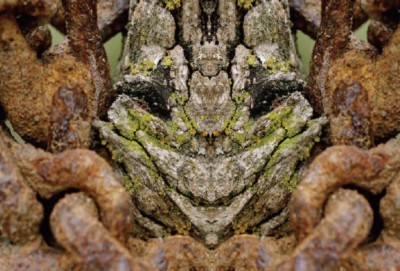
This blog series is contributed by Guest Blogger, Ian Wight.
In Pursuit of Ecological Wisdom – Inter-Subjective According in the Noosphere?
Place, Placemaking and Placemakers – Poetic Agency in Communion
Coming Home to Ourselves – Praxis-making
Co-Creative Integrities – Ethos-making
Enacting our Knowing, Doing and Being – in Service
Telling Stories to Our Future: A Poiesis of Sophrosynes?
Fay Blackburn Lived the Master Code of Care
The greater Findhorn community lost a dearly beloved Master Community Carer March 23, 2020, when Fay Blackburn died.
Fay, born in Yorkshire and a sometime resident in Canada had lived in Findhorn since the 1990’s.

Since her passing, Fay has been recognized, mourned, remembered and celebrated in Findhorn meditations, Taizé singing, at the funeral procession to her green burial site and at the reception following. So many people were touched personally by Fay as well as collectively as a community. Fay liked to stay behind the scenes in her many activities, but she was always there making a difference.
I met Fay 2 years ago when I moved to Findhorn and started to sing Taizé every morning. Fay was a faithful daily participant, lending her true voice to the Tenors but willing and able to contribute to any of the other Alto, Soprano (or even Bass) Voices who needed her vitality and guidance. Fay not only sang, but often lead Taizé – including the Sunday celebrations which included sacred dance along with the sacred songs. She so loved singing she was also a member of the Threshold Choir and the Georgian Singers. All three groups sang at her funeral service giving Voice to the sun and wind and flowers who attended Fay’s burial.
Fay’s long-time Findhorn friends have noticed her fulsome, wholesome and holistic life in many ways. I wanted to add a few words of appreciation to recognize Fay’s life as exemplifying many characteristics of not only an Integral Life – embracing thought, action, community and co-creation – but with a passion and intention that inspired many in her incarnated existence and continues to inspire us as she has moved to another dimension.
As I learned from watching the alive Fay and listening to the abundant stories of her life from family, friends, acquaintances and neighbours, I am impressed by how Fay lived the Integral Yoga that I call the Master Code of Care.
Fay modelled care for herself: In the daily practice of singing Taizé, of eating organically, of raising where possible her own food, of both tolerating early symptoms of illness as treatable by holistic means and then having the courage to take allopathic treatments (like chemotherapy), Fay was also able to release herself to the Divine path of the conclusion of her full, rich life, surrounded by family and friends.
Fay modelled care for others: As the stories of Fay’s life were recounted, we learned how faithfully she had hospiced others who needed and abiding witness and friend in their illnesses. She also cared for her own children and grandchildren and was a dedicated godparent. We saw how Fay had devoted 3 months a year to support a family in Spain who were producing organic vegetables, fruits and oils. She laboured physically, emotionally, mentally and spiritually in all the ways she cared for others, never shirking the demands of such holistic care (embracing the cycles of birth and death as part of her acceptance of life).
Fay modelled care for her place(s): In Findhorn she was renowned for her simple life, living lightly on the earth. During the last 17 years in Findhorn The Park, she occupied a single room, in a home she shared in a (not-related-to-her family’s home). She resisted the accumulation of “stuff” but insisted on the quality of what she did consume and of experiences. She became renowned for mending her and others’ clothes (Jonathan caddy’s Scottish socks, the heart-shaped patch on her working pants); fixing the Nature Sanctuary drapes; lovingly maintaining the inventory of Taizé songbooks. Fay was a pioneer of the Caring Community Circle. She was even the first person to buy a plot in Findhorn’s green burial site. She was the official tea maker of the Hinterland Work Parties and doing her fair share of Hinterland forest care as well. One of Fay’s recent delights was to try her hand at the art of mosaics – being appreciated as a Saturday co-creator of the Cluny 1001 Angels mosaic project. Fay did so many of the in-between-connecting/caring services in Findhorn-related places, that we are challenged to find a way to replace the myriad of ways and means she so enthusiastically embodied.
Fay modelled care for the planet: Fay was an early co-organizer of “Trees for Life” – not only advocating for the value of planting trees to restore and sustain earth systems – but actually doing the hard work of planting the trees herself and then coordinating and directing teams for “seedling- nursery duty” even up to the Fall 2019 season of Highland mountain hiking. Fay was always an advocate for Nature’s wellbeing, but she was also a fierce advocate for the principles of life in the political realm – not only participating in local Moray Extinction Rebellion events, but even travelling to London in 2019, backpack and tea-making equipment in tow, to practice Non-Violent-Direct-Action with XR youth who could have been her grandchildren (Fay was 77).
When people ask me, how we can co-create Integral Cities – my key advice, process and path is to point to the Integral Yoga of the Master Code of Care. More and more people are repeating the invocation – to Care for Self, Others, Place and Planet. Some are even trying the Yoga as a daily practice (which I review at the end of every day for myself). But Fay has gone far beyond the repetition of the Yoga or just taste testing the practice. Instead – even though Fay and I never talked about the Master Code of Care – Fay had so aligned the Care of Self, Others, Place and Planet, that she essentially lived the Yoga as a way of life.
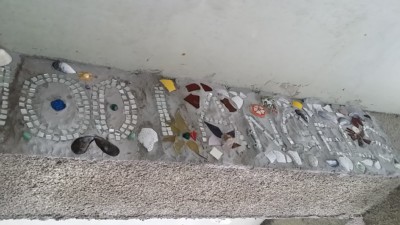
Thank you Fay for being such a powerful model in one community, its bio-region, whatever city you visited and for the planet that you so loved, that you chose a green burial where you could rest in the earth in the natural flow and evolution of life. Thank you, Fay Blackburn for being such a powerful model of the Master Code of Care. You have shown us all how to enact the Code simply, deeply, profoundly and integrally.
February 9, 2020
Integral City: Evolving Gaia’s Organs of Peace
Pyeongchang Peace Forum 2020 invited Marilyn Hamilton to speak at their Forum February 10, 2020. Unfortunately, because of travel restrictions related to the Novel Coronavirus Dr. Hamilton was not able to attend in person. However, she shares this Abstract of her presentation and sends her deepest Appreciation to the organizers, presenters and attendees.
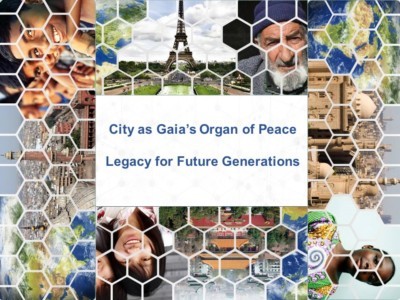 Integral City: Evolving Gaia’s Organs of Peace
Integral City: Evolving Gaia’s Organs of Peaceby Marilyn Hamilton PhD, Founder Integral City Meshworks
Integral City integrates and synthesizes the evolutionary dynamics of the city as the most complex human system yet created. Guided by Gaia’s Evolutionary Impulse, we can build Capacity for Peace when we honour Context and live the Master Code of Care: simultaneously Caring for Self, Others, Place and Planet.
Integral City proposes cities are Gaia’s Reflective Organs, with humans the cells in those organs and our organizations their sub-systems/organelles. (Lovelock)
Learning from Gaia, Integral Cities as Organs of Reflection create an ecology for the emergence of Peace by evolving 10 City Capacities:
Cities as complex adaptive living systems with 5 sets of intelligences for surviving, adapting to our environments and regenerating. (Hamilton, Capra)
Biomimicry lessons that reveal our cities are human hives – powerful collectives, like the beehive is for bees. (Hamilton, Bloom, Benyus)
Co-existing with 4 realities that frame our lives through: intentions, cultures, behaviors, systems. (Wilber, Hamilton)
4 ways of knowing our realities: subjective, intersubjective, objective, interobjective. (Wilber)
4 Voices to serve the Purpose of Peace in our human hives (like the 4 roles in the beehive: Citizens/Producers, Business-Innovators/Diversity Generators, Resource Allocators/Civic Managers, Inner Judges/3rd Sector). (Hamilton)
Species development beyond the stage of competition into the stages of cooperation and collaboration – in other words Peace. (Sahtouris).
City growth through steps and stages that scale the Capacity for Peace. (Eddy, Hamilton)
The Master Code of Care to expand our circles of compassion. (Hamilton)
Conditions for Human Security. (Hamilton, Buhag O’Brien et al)
Roles for managing Peace and Conflict with the 4 Voices as Community, acting as a 3rd Side able to engage any issue and heal trauma, pain, injustice, conflict, pollution, degradation. (Ury, Huebl)
The legacy of the Korea 2018 Olympics and Paralympics calls forth the ecology and scaling of the Master Code. The Games created an energy field for manifesting an Integral City, Gaia’s Reflective Organ of Peace where Excellence can be mapped and thrives as:
Individual Performance (Map 1)
Collective Coordination, Cooperation, Collaboration (Map 2)
Placecaring and Placemaking (Map 3)
Planetary/Global Participation. (Map 4)
The Goal of the City of Peace is to Mirror this process for living every day – not just as performance, but as Evolutionary/Involutionary Principles in Practice. (Map 5)
The City as Gaia’s Organ of Peace is an evolutionary impulse from and for Gaia. We have the tools and skills to design it. We must call forth the will to Placecare and Placemake the City of Peace as our legacy for future generations.
We have a Gaelic blessing that we sing in Taizé Community.
Deep Peace of the running wave to you.
Deep Peace of the flowing air to you.
Deep Peace of the silent stars to you.
Deep Peace of the quiet earth to you.
It is time now to add a new verse to this and sing it for the City of Peace:
Deep Peace of the Evolutionary Flow to you.
Deep Peace of the Living Hive to you.
Deep Peace of the City’s Voice to you.
Deep Peace of the Master Code to you.
References: Integral City Book Series:
Integral City 3.7 Reframing Complex Challenges for Gaia’s Human Hives (2018)
Integral City Inquiry and Action: Designing Impact for the Human Hive (2017)
Integral City: Evolutionary Intelligences for the Human Hive (English 2008, 2019, Russian 2014).
This blog series inquires into Peace and what is a City of Peace?
How Can We Create Cities of Peace When We Have Disturbed Gaia’s Peace?
Our Evolutionary Journey to the Master Code of Care for a City of Peace
How is the Integral City Framework Good For Evolving Cities of Peace?
Integral City: Evolving Gaia’s Organs of Peace
January 21, 2020
How is the Integral City Framework Good For Evolving Cities of Peace?
The Integral City Framework reveals fractal patterns of Gaia. It is built on Universal patterns and principles. So, when we discover it, we are blessed with the opportunity to explore what is the Integral City Framework (ICF) good for?
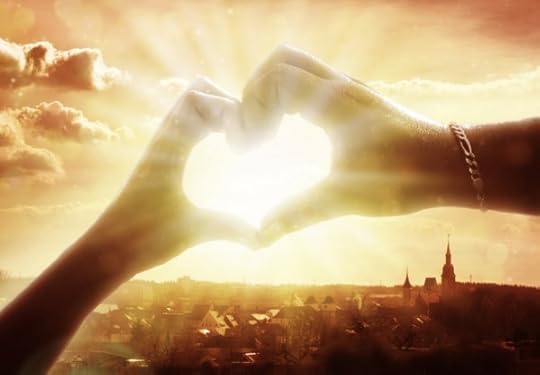
ICF is especially good for “wicked” problems – where the interconnections and non-linearities of Life contained in the city need to be embraced with Care, Context and Complex Capacity.
This embrace contains multiple levels of plurality and interconnections that have “natural” habits of structuring, restructuring and self-organizing. And the impulse behind these dynamics is always the Impulse of Life. The Evolutionary Impulse.
The Evolutionary Impulse extends itself into ever-greater expansion of space, time and moral influence. This creates for humans the conditions for leadership in an ecology of Life.
The Evolutionary Impulse has emerged for Gaia, Intelligences, given itself 4 Voices (with infinite numbers of variations), designed ways of knowing, revealed the Truth, Beauty and Goodness that penetrate all Life Systems including the systems of cities and Gaia’s planetary system of cities.
To design a City of Peace we need to honour Gaia’s Motherhood … that as a Living System she has birthed all the realms of mineral, vegetable and animal – the geo-bio – noetic realms out of which we as human systems have evolved. And now she is birthing the reflective specialities that gives her capacities for exploring consciousness through us, with us, as us.
Gaia seeks Peace for her realms as a natural condition. It is a Peace emerging from the Ecology of existence – complex and adaptive; naturally holarchic where levels of complexity are nested in and co-existent with other expressions of complexity.
Gaia contains all the relationships amongst her realms that must honour Peace. Gaia’s Principles ask that all her Creations honour the Life of Others to Co-Exist, within a dynamically balanced ecosystem, without endangering the great Chain of Being that manifests as an interconnected and entangled Systems of Life. If Gaia’s creations cannot enact this Principle of Co-Existence, then she honours her learning about an “experiment that didn’t work” and releases those elements and resources back into the greater Gaian system for new life to emerge.
Indeed, this is not only our Gaian heritage but our heritage from the Universe. We are all ONE and within the Great Unity we may express diversity in any way – as long as it honours the ONEness at the same time as our uniqueness. It is how we have emerged from the stars through the long evolutionary line of the Cosmosphere, Bioshere, Nooshpere into the Anthroposphere.
This year at Pyeongang Global Peace Forum 2020 (PPF2020) at the edge of the DMZ we are standing on an experiment of Peace. Achieved out of the cauldron of a war of differences but seeking an Ecology of Honour. For if we are to accept Peace as a possibility it begins with honouring ourselves and all others – that we each have gifts and capacities to bring to an experience of Peace through finding our service to the Ecology of Peace.
Since cities are the most complex systems yet created by humans, it is natural that we should long for, seek and co-create Cities of Peace. Places which we not only Make for Peace – Placemaking … but places that we Care for Peace.
As I have studied the patterns of cities through the lens of biomimicry – through our cousins the honey bee – I have re-discovered the natural and powerful Code of Care – that I call the Master Code of Care. In our cities we must Care for Self, Care for Others, Care for Place and Care for Planet.
This 4-part practice of Care is an Integral Yoga. It enables Peace both in a horizontal plane and also Peace on a vertical plane.
Integral City would propose that of all its frameworks, maps and Practices, the Master Code of Care is the impulse that energizes all or our Possibilities for Peace.
It arises from the ONEness. It is a practice of Unity with Diversity.
It is the ultimate answer to “What is an Integral City good for?”. If we are to have Cities of Peace, they must be at their heart be able and willing to practise the Master Code of Care. This will be our core and/or uber Intelligence to serve Gaia as her Reflective Organs of Peace.
This blog series inquires into Peace and what is a City of Peace?
How Can We Create Cities of Peace When We Have Disturbed Gaia’s Peace?
Our Evolutionary Journey to the Master Code of Care for a City of Peace
How is the Integral City Framework Good For Evolving Cities of Peace?
Marilyn Hamilton's Blog
- Marilyn Hamilton's profile
- 3 followers





